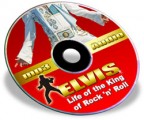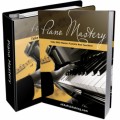Salespage Snapshot

Table Of Contents
FOREWARD v
I. EUGÈNE YSAYE The Tools of Violin Mastery 1
II. LEOPOLD AUER A Method without Secrets 14
III. EDDY BROWN Hubay and Auer: Technic: Hints to the Student 25
IV. MISCHA ELMAN Life and Color in Interpretation.
Technical Phases 38
V. SAMUEL GARDNER Technic and Musicianship 54
VI. ARTHUR HARTMANN The Problem of Technic 66
VII. JASCHA HEIFETZ The Danger of Practicing Too Much.
Technical Mastery and Temperament 78
VIII. DAVID HOCHSTEIN The Violin as a Means of Expression 91
IX. FRITZ KREISLER Personality in Art 99
X. FRANZ KNEISEL The Perfect String Ensemble 110
XI. ADOLFO BETTI The Technic of the Modern Quartet 127
XII. HANS LETZ The Technic of Bowing 140
XIII. DAVID MANNES The Philosophy of Violin Teaching 146
XIV. TIVADAR NACHÉZ Joachim and Léonard as Teachers 160
XV. MAXIMILIAN PILZER The Singing Tone and the Vibrato 177
XVI. MAUD POWELL Technical Difficulties: Some Hints for the Concert Player 183
XVII. LEON SAMETINI Harmonics 198
XVIII. ALEXANDER SASLAVSKY What the Teacher Can and Cannot Do 210
XIX. TOSCHA SEIDEL How to Study 219
XX. EDMUND SEVERN The Joachim Bowing and Others 227
XXI. ALBERT SPALDING The Most Important Factor in the Development of an Artist 240
XXII. THEODORE SPIERING
The Application of Bow Exercises to the Study of Kreutzer 247
XXIII. JACQUES THIBAUD The Ideal Program 259
XXIV. GUSTAV SAENGER The Editor as a Factor in “Violin Mastery” 277
Sample Content Preview
VIOLIN MASTERY
EUGÈNE YSAYE
THE TOOLS OF VIOLIN MASTERY
Who is there among contemporary masters of the violin whose name stands for more at the present time than that of the great Belgian artist, his “extraordinary temperamental power as an interpreter” enhanced by a hundred and one special gifts of tone and technic, gifts often alluded to by his admiring colleagues? For Ysaye is the greatest exponent of that wonderful Belgian school of violin playing which is rooted in his teachers Vieuxtemps and Wieniawski, and which as Ysaye himself says, “during a period covering seventy years reigned supreme at the Conservatoire in Paris in the persons of Massart, Remi, Marsick, and others of its great interpreters.”
What most impresses one who meets Ysaye and talks with him for the first time is the mental breadth and vision of the man; his kindness and amiability; his utter lack of small vanity. When the writer first called on him in New York with a note of introduction from his friend and admirer Adolfo Betti, and later at Scarsdale where, in company with his friend Thibaud, he was dividing his time between music and tennis, Ysaye made him entirely at home, and willingly talked of his art and its ideals. In reply to some questions anent his own study years, he said:
“Strange to say, my father was my very first teacher—it is not often the case. I studied with him until I went to the Liège Conservatory in 1867, where I won a second prize, sharing it with Ovide Musin, for playing Viotti’s 22d Concerto. Then I had lessons from Wieniawski in Brussels and studied two years with Vieuxtemps in Paris. Vieuxtemps was a paralytic when I came to him; yet a wonderful teacher, though he could no longer play. And I was already a concertizing artist when I met him. He was a very great man, the grandeur of whose tradition lives in the whole ‘romantic school’ of violin playing. Look at his seven concertos—of course they are written with an eye to effect, from the virtuoso’s standpoint, yet how firmly and solidly they are built up! How interesting is their working-out: and the orchestral score is far more than a mere accompaniment. As regards virtuose effect only Paganini’s music compares with his, and Paganini, of course, did not play it as it is now played. In wealth of technical development, in true musical expressiveness Vieuxtemps is a master. A proof is the fact that his works have endured forty to fifty years, a long life for compositions.
“Joachim, Léonard, Sivori, Wieniawski—all admired Vieuxtemps. In Paganini’s and Locatelli’s works the effect, comparatively speaking, lies in the mechanics; but Vieuxtemps is the great artist who made the instrument take the road of romanticism which Hugo, Balzac and Gauthier trod in literature. And before all the violin was made to charm, to move, and Vieuxtemps knew it. Like Rubinstein, he held that the artist must first of all have ideas, emotional power—his technic must be so perfected that he does not have to think of it! Incidentally, speaking of schools of violin playing, I find that there is a great tendency to confuse the Belgian and French. This should not be. They are distinct, though the latter has undoubtedly been formed and influenced by the former. Many of the great violin names, in fact,—Vieuxtemps, Léonard, Marsick, Remi, Parent, de Broux, Musin, Thomson,—are all Belgian.”
Other Details* Sales Page: Included, HTML
* File Format: MS Word Doc, PDF
* Number of Pages: 67
* Included Graphics: Ecovers, PSD
* Extras: Keywords
* Download File Size: 9,760 KB












